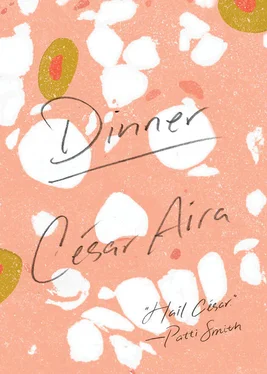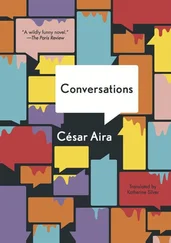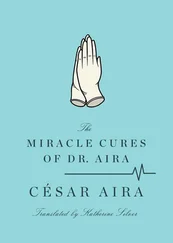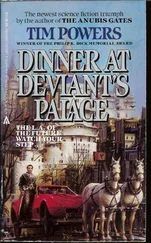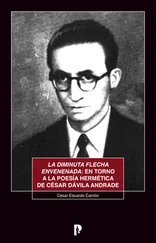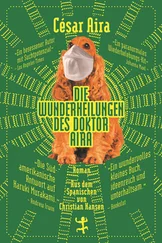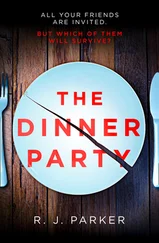They stopped in front of the Church. They got out of the car. The uncle went straight to the rectory. He wasn’t concerned about it being too late. The groom accompanied him. They found the door broken down and entered, intrigued. Two tall shredded shadows crossed the Plaza and entered behind them. The bride, in the meantime, had seen that the doors to the church were open, and she entered, thinking that maybe she would find the priest presiding over a nighttime service. That was not the case. The nave was empty; solitary candles were burning on the altar. She walked down the central aisle in her long dress of white tulle: the repetition of the same scene, this time in a different register. She’d gotten married just hours before, in the chapel at the estate, and there she had also proceeded “white and shining” down the central aisle, but then the aisle had been flanked by smiling faces, and the “Wedding March” was playing, and there were lights and flowers, and there, in front of her, her groom had been waiting. Now, on the other hand, the only figure she was approaching was Christ presiding over the altar, and she continued precisely because of how fascinated she was by that statue, which she didn’t remember ever having seen in the church in Pringles. It was a Christ Crucified, suffering, expressionistic, twisted, frankly putrefied — the work, one might say, of an insane imagination that had melded the concept of Calvary with that of Auschwitz and the aftermath of a nuclear or bacteriological apocalypse. In the tremulous half light, more than see him, she imagined him, and it was too late when she realized that she had imagined him wrong, when the Crucified One leaped at her and snorted — with diabolical bellowing — and fell upon her; they rolled over together, the bride unable to shout because at that precise instant the false statue ripped open her skull and was slurping the rich little drops, a substance filled with the expectations of honeymoon, children, and a home.
At the Palacio, in the meantime, pessimism had given way to desperation. Some final phone calls, which were cut off, led them to deduce what had taken place at the Clinic. At the Hospital, in spite of its distance from downtown, things hadn’t gone any better; even the Old People’s Home for the Indigent, adjacent to the Hospital, was the site of a ravenous visit, and they didn’t spare a single head. Didn’t they respect anything? Wouldn’t they turn up their noses at the poor, the old, or the infirm? From the look of things, no. The police medical examiner, who was still at the mayor’s office, shared his reflections on these questions with his comrades in misfortune. In their search for endorphins, he said, the barely resuscitated dead had nothing to lose; the human nature of their living cohorts worked in their favor, it wanted the living to stay alive; that’s why it provided its organisms with an inexhaustible source of the substance of happiness, so that they would never stop believing that it was worthwhile to continue in this world, and to multiply. Given this premise, everybody had some. The beautiful, the rich, the young all secreted endorphins constantly, not only the passive ones, the product of the happiness in which they spent their lives, but also the active ones, since the rich want to be richer, the beautiful more beautiful, the young younger. And these active endorphins, the ones the nocturnal slurpers most valued, were the speciality of the majority of the rest of the population: the old, the poor, the humble, the sick. The last scraps of human detritus, people who hadn’t enjoyed a single moment in their entire life, had to produce tons of endorphins in order to keep that life going.
He continued for a while, reasoning along those lines. Very interesting, but very useless. Or maybe not, because a little later this reasoning produced a practical result. Some suspicious sounds coming from the dark recesses of the Palacio, as well as the certainty that their situation was unsustainable, made them decide to attempt an escape. It wasn’t that harebrained. The Plaza looked deserted, and the mayor’s Cherokee was parked in front, and was intact: all they had to do was run about fifty yards, jump into the powerful vehicle, and floor the gas in the direction of the Cemetery and Route 3. The already devastated neighborhoods along the way shouldn’t be too dangerous. Abandoning their families, by this time, was already a fait accompli. It had been a while since anybody had answered their home phones. Anyway, they wouldn’t go very far. If they drove toward Bahía Blanca, they would, perhaps very shortly, meet up with the reinforcements they had requested and that had been confirmed were on their way. In fact, the best thing they could do was wait for them there, since it was clear that it would be impossible to launch any effective action from the town itself.
All good, in theory, but when the words “let’s go” were spoken, there was tremendous vacillation. The process of running those fifty yards out in the open to get to the vehicle was difficult for them to digest. What if just one of them went to start the car and bring it to the esplanade in front of the Palacio to pick up the others? They didn’t even bother to propose it — nobody was in the mood for sacrifices. At that moment the medical officer remembered what he’d said, and a solution occurred to him. El Manco. Was he still at the top of the tower? Yes, certainly, but what did El Manco have to do with it? Simple: if we all need endorphins to overcome the animosity and tedium of the world, a cripple would need them that much more. The idea, pretty cunning, was to get El Manco to accompany them on the way out; if they attacked, they’d attack him first, giving the rest of them a few precious seconds to escape.
They didn’t question the humane aspect of this ploy. Since half the town had already perished, what did one more victim matter, especially if he was useless, defective, and semi-moronic? They called him on the walkie-talkie and went to meet him at the little door at the bottom of the winding staircase. They had a good excuse to request his presence: they didn’t want to leave him behind. Once he was with them, they explained their plan of escape — omitting the detail that concerned him — armed themselves with all the blunt objects they could find, and then left. There was nobody to be seen in the Plaza. The moon was very high and very small, like a pale little lightbulb that was difficult to connect to the silvery brightness that bathed the trees and the flower pots. Tonight more than ever, the fountain, the famous Salamone fountain, evoked the oft-made comparison with Babylonian flying saucers. “Ready?” “All together!” “Run as fast as you can!” “The keys?” The mayor was holding them in his hand.
“Go!”
Had they been waiting for them? Had they fallen into a trap, set especially for them? The fact is, they hadn’t even covered half the distance when there appeared about twenty living dead — fast, precise, implacable in spite of their disjointedness— who stood in their way. What happened next took only seconds. The medical examiner’s prognostication was right: all twenty of them fell upon El Manco, cracked open his head, and latched on like piglets taking suck. The others scattered in momentary confusion that didn’t last long because more attackers were approaching from behind the cars parked across the street and the fountains to the sides, so they retreated, running back to the Palacio. They didn’t turn to look at poor El Manco, who had become a pincushion, still standing (he hadn’t had time to fall).
The Palacio had ceased to be a refuge. In fact, several corpses had entered behind them, sending the group racing every which way through dark rooms, up and down staircases, and along corridors. After a few minutes of this “lethal blob,” everybody was thinking that they were the last survivor, and a few seconds later everybody was right, or one was. The mayor, having lost all dignity, was curled up in the back of a wardrobe whose door he closed from the inside, and there he stayed, still and quiet, holding his breath.
Читать дальше
